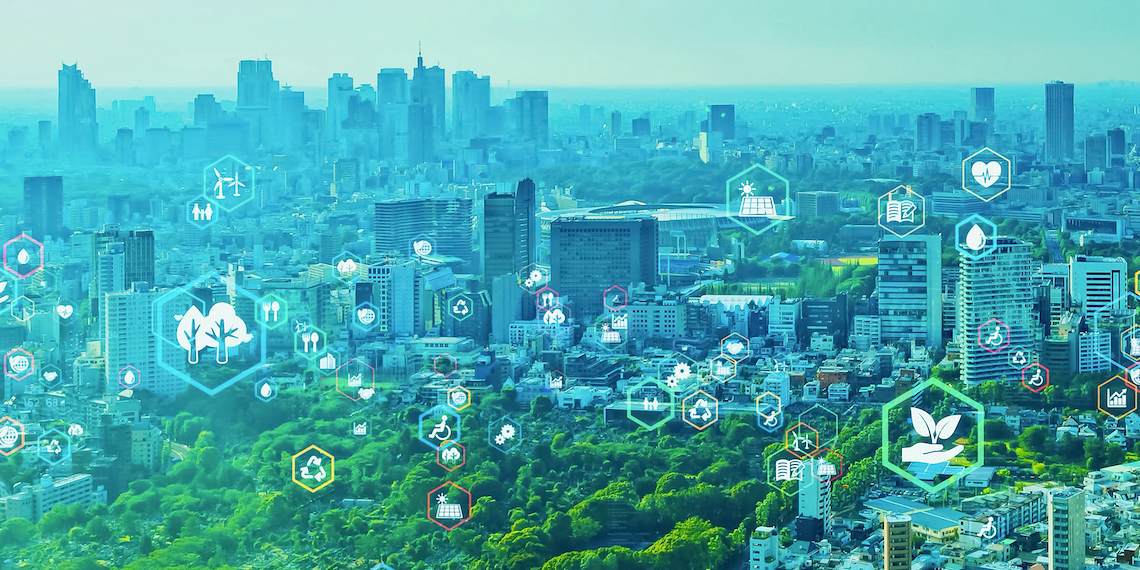Smart, resilient cities key to meeting SDGs and climate challenges

As climate impacts and sustainable development challenges continue to mount, leaning into innovative and resilient urban planning will help us adapt and achieve the United Nations Sustainable Development Goals (SDGs) faster.
International Water Association Australia (IWAA) is a branch committee of AWA and aims to connect the Australian water community with the activities of the International Water Association (IWA).
A non-profit organisation and knowledge hub for the global water sector, IWA seeks to connect water professionals worldwide to find solutions to the world's water challenges.
Presenting at the IWAA webinar Leading Global Practices for Smart Resilient Cities, Monash University Professor of Sustainable Development Tony Wong said the joint issue of climate and sustainable development offers opportunities for informing the planning for our cities of the future.
“We find that we are facing the convergence of climate mitigation, climate adaptation and SDG initiatives. Cities are an integrated platform for a lot of these issues; not just in water but in a whole range of other initiatives,” he said.
However, Wong said there are different interpretations of what “smart” and “resilient” mean, particularly as the impacts of climate change are inevitable and continue to mount.
“The impact of climate change is so often manifested in global water phenomena, which includes the direct impact of water security issues, such as drought, floods, environmental degradation and loss of natural capital,” he said.
“But there are also significant indirect impacts related to food security, public health and, of course, our capacity to respond to heat waves and wildfires.
“Over the last 10 years, there has been a significant shift in our efforts, from climate mitigation towards climate adaptation.
“And leadership and innovation in the water sector presents a critical foundation in global climate adaptation initiatives.”
Wong said recent analysis shows how integral water management is to meeting many of the SDG goals, highlighting the importance of developing innovative and sustainable integrated water management within our cities, now and in the future.
“We undertook an analysis asking the simple question of: how does water management influence the many SDG targets that we know need to deliver by 2030?” he said.
“In our analysis, we found that good water management practices directly influence 50 of the 169 SDGs targets across the 17 goals. In addition to that, a further 34 SDG targets can be significantly influenced by the way we manage water.
“The way we manage water can significantly influence how fast the delivery of the SDGs can be enabled, and also how we build significant climate adaptation capacities.”
What is a smart resilient city?
While there are many interpretations of what smart and resilient really means, for Wong there are four key initiatives that underpin what smart resilient cities need to be.
“Infrastructure needs to be integrated, multifunctional and adaptive. These cities also need to build social and technical resilience at practitioner level and at government level,” he said.
Wong said these two initiatives are closely connected; integrated, multi-functional and adaptive urban systems are all about good and innovative design and operation.
“You can’t really divorce the two in the sense that the interplay between community behaviour, government legislation, and the capacity of our private sector and our technical practitioners underpin the delivery of the technical innovation that we are seeing today,” he said.
“Our cities are melting pots for many challenges, of which water management is just one part. The third is strategic planning, where we combine infrastructure planning, land-use planning, and planning for beyond water for urban livability outcomes.”
Lastly, Wong said smart and resilient cities also consider how digitally enabled operations that use big data can influence delivery and optimisation of operations of this multifunctional infrastructure.
“When talking about smart cities, we often think about the role of digital technology. But there is a more fundamental (smart) role related to how we design infrastructure — how we enable the co-investment and integration of different disciplines into that design,” he said.
Smart cities in action
Wong said one trend in the development of integrated, multifunctional and adaptive cities is the focus on nature-based solutions, particularly initiatives that create co-benefits.
“The most common approach we see a lot globally and in Australia is the integration of nature-based solutions into our infrastructure. We need to think about the delivery of urban spaces as integral to ecosystem services,” he said.
“It needs to be part and parcel of our urban fabric and in the way we manage water.”
Another trend is the role of transport corridors in city shaping, Wong said.
“Transport corridors provide the connectivity that enables nature-based solutions and ecosystem services to reach right up to the allotment level. They are very effective in integrating nature-based solutions for such ecosystem services as safe passage of floodwaters, and water cleansing and supporting local stormwater harvesting,” he said.
“Many urban designs now have this integration. And, of course, the transport corridors are green and well-vegetated, and can deliver the type of urban heat mitigation that we now require so much.”
In relation to social-technical resilience, Wong said the emergence of community-based deliberation in corporate policy and investment strategy is exemplified in Yarra Valley Water’s use of citizen juries in determining its five-year strategies.
“The importance of citizen deliberation in infrastructure investment and corporate policy really brings customers much closer to operation and strategic investment of water utilities,” he said.
“The emergence of digitally-enabled operation is well understood, and many utilities are in fact using the Internet of Things (IoT) to increase the efficiency of their operations.”
However, the emerging role of city-wide IoT will further advance the transformation of cities.
“The water-energy nexus also allows us to think about the concept of a circular economy and how digital technology can help us deliver a much more optimal and sustainable outcome,” he said.
Wong said the urban renewal at Fisherman’s Bend in Melbourne is an excellent example of strategic integrated planning for cross-sectoral infrastructure for urban sustainability, resilience and liveability, and the rapid uptake of digitally enabled operations is also assisting.
“Here the combination of a number of broad strategies related to water management, ecological space making and circular economy all come together. These urban renewal projects can actually provide fast advancement and leap-frogging in water management,” he said.

